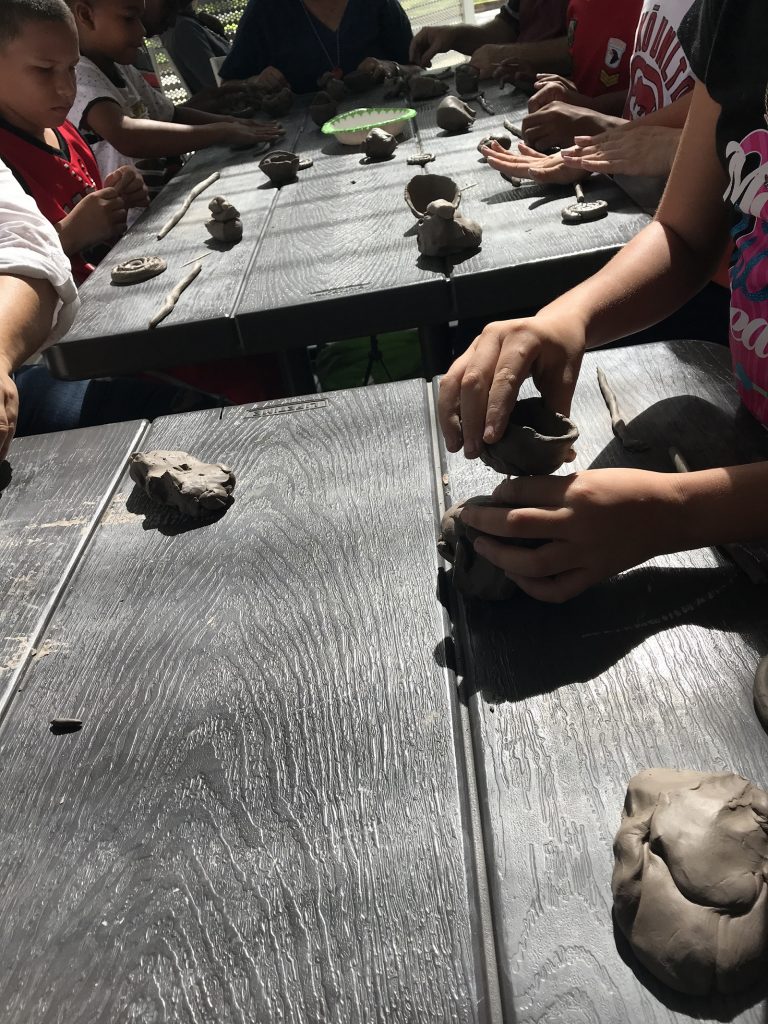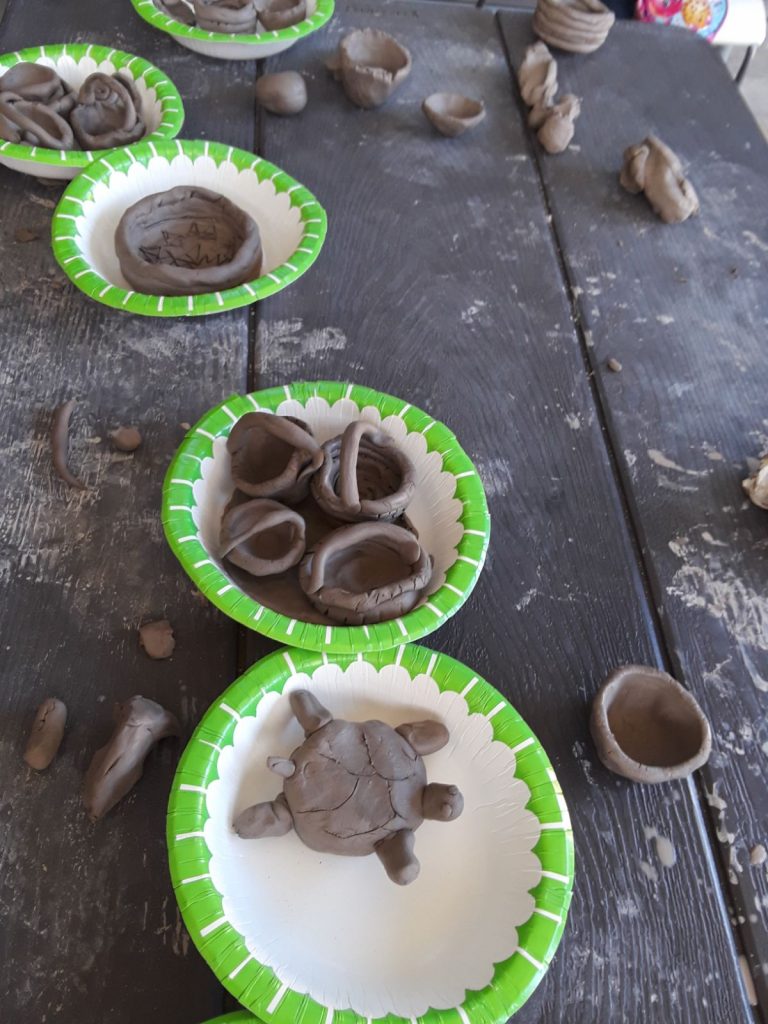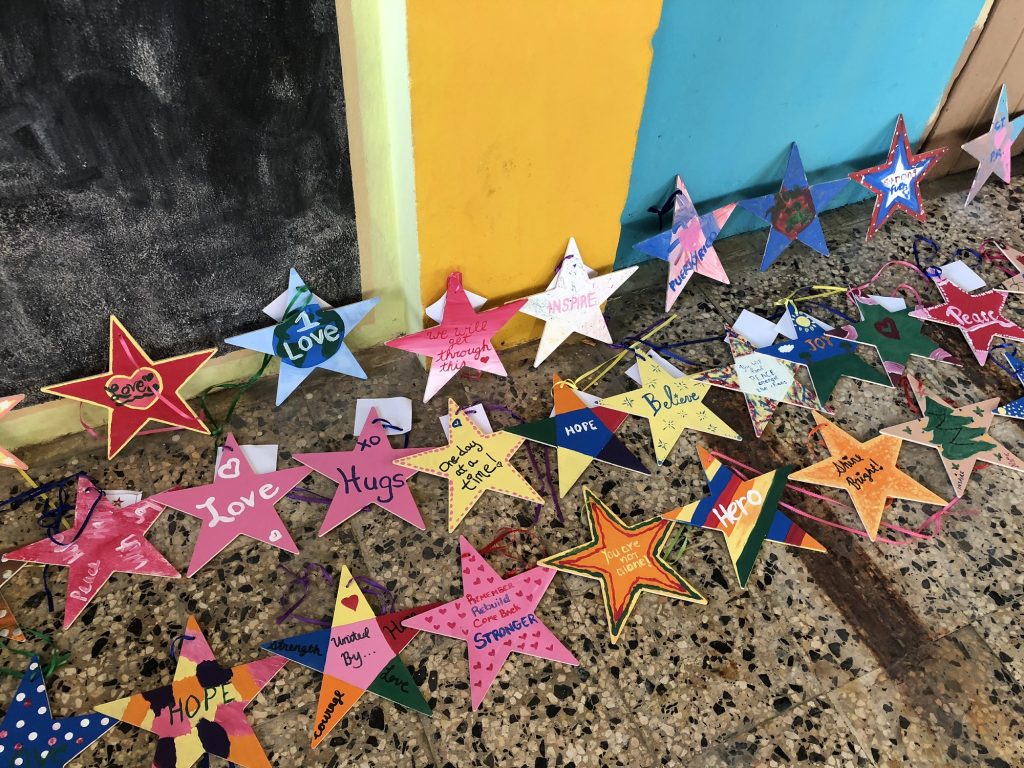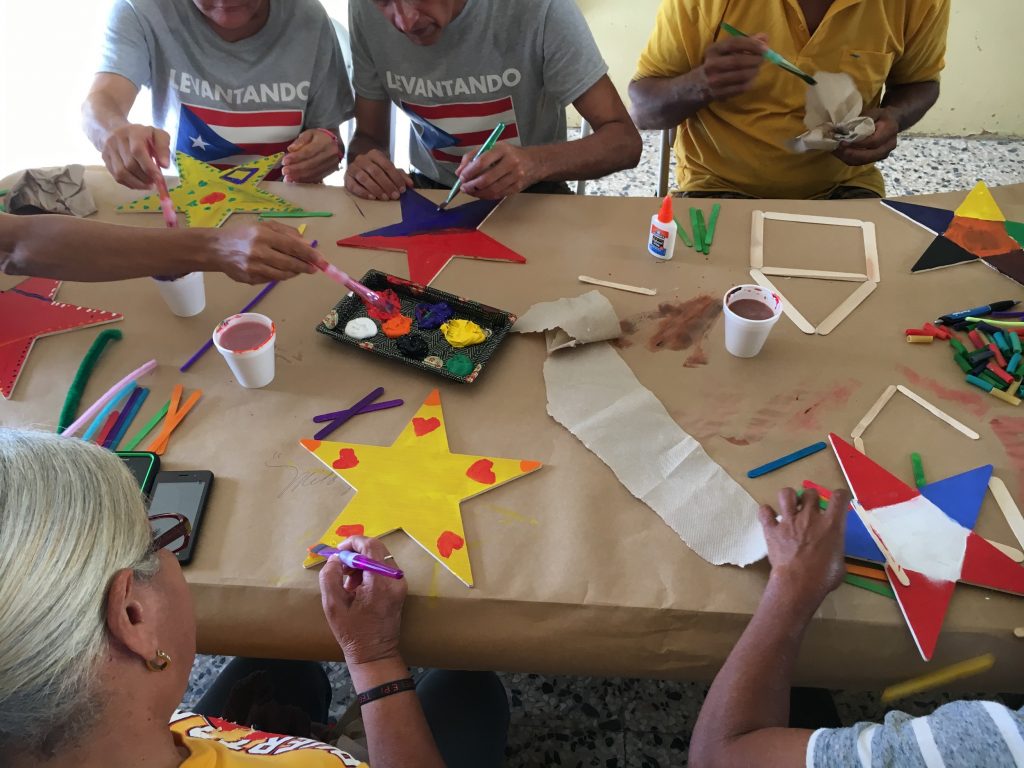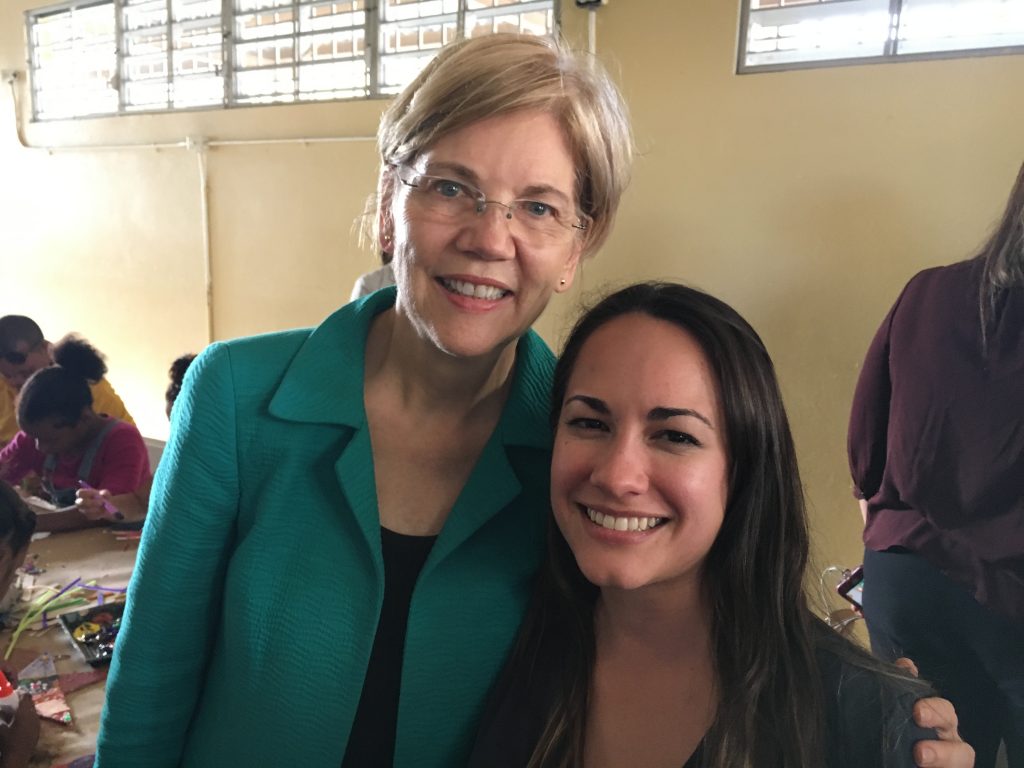By Anais Lugo-Axtmann, MA, LGPC, ATR | April 26, 2018 | Trauma | Community
Experiencing hurricanes Irma and Maria was traumatic for most people living on the island of Puerto Rico. Seven months after Maria, Puerto Rico continues to experience prolonged losses of electricity, water, communications and infrastructure, limiting individuals’ ability to recover, keep their jobs and return to their routine (which is so vital for recovery). Many Puerto Ricans are reporting intense feelings of anxiety and depression which have been linked to the onset of mental health crises. While dealing with grief, they struggled to get their basic needs met; many of them had to permanently leave the island where they call home. From Washington DC, I heard how my family and friends had suffered and lost so much after the hurricane. Like many Puerto Ricans living on the mainland, this sensation of hopelessness and melancholy for what Puerto Rico used to be destroyed me inside. Puerto Rico was no longer the island that I grew up in and I could only hope that there was something positive that could come from the fierce transformation that Puerto Rico was going through.
From January 11 to January 15 of 2018, the Puerto Rico Art Therapy Association (PRATA) and the Florida Art Therapy Association (FATA) collaborated to volunteer in several shelters throughout the island and provide art therapy group services. I joined the four other PRATA chapter members (Maricel Ocasio PsyD, ATR-BC; Liani Vazquez, MA; Marta Rivera, MA; Urania Dominquez, MA), and four FATA chapter members (Joseph Scarce ATR-BC, MAAT, MFT; Stephanie A. Wray, ATR-P; Susan Joy Smellie, ATR; and Haley Haren), and two volunteer psychologists from Puerto Rico (Francis González, PsyD, and Manena González, MA, LPC) to provide art therapy services to those affected by Hurricane Maria. Joshua Garcia from Stars of Hope also participated in events and brought completed Stars of Hope from other tragedy sites to give to families in PR. Additionally Wayne Ramirez, ATR -R, PRATA HLM, sponsored art therapy student Haley Haren to join the trip.

Top from left: Francis Gonzalez, PsyD; FATA President Joseph Scarce ATR-BC, MAAT, MFT; Joshua Garcia; Haley Haren; Susan Joy Smellie, ATR; Marta Rivera, MA. Below from left: Executive Director of the Ricky Martin Foundation Bibiana Ferraiuoli, MA; PRATA President Maricel Ocasio PsyD, ATR-BC; Anais Lugo-Axtmann, LGPC, ATR; and Stephanie A. Wray ATR-P, MHC-Intern.
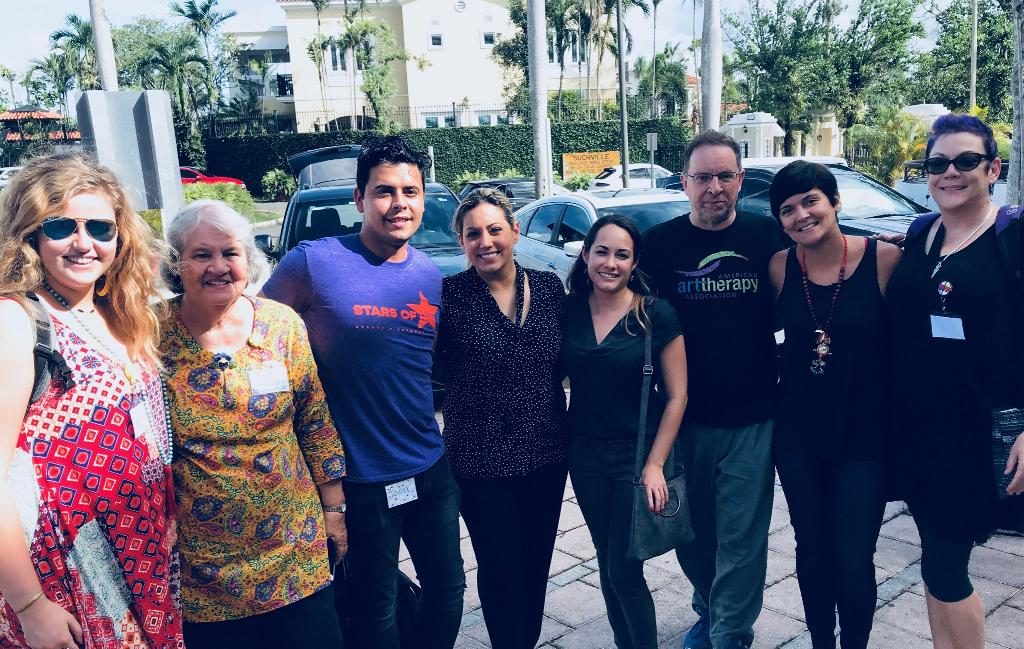
From left: Haley Haren; Susan Joy Smellie; Joshua Garcia; First Lady of Puerto Rico Beatriz Rosello; Anais Lugo-Axtmann; Joseph Scarce; Maricel Ocasio; Stephanie A. Wray.
The team provided art therapy to families at the Canovanas shelter, children from Comunidad La Cueva in Centro Tau, Loiza, and families at the Vega Alta Shelter. All or most of these families suffered loss of housing from Hurricane Maria. We used art therapy interventions focused on promoting self-expression, a sense of control, and discharge of acute stress, and worked with children, families and older adults. Through art therapy, participants practiced mindful awareness and told their stories.
Why we used clay as the material of choice
Clay was one of the materials used to address the sensory and kinesthetic needs of the therapeutic process to offer participants the opportunity to create, reflect and reconstruct their piece. They were encouraged to create three bowls that represented the past, the present and the future respectively and were invited to reflect on what they wanted to contain in each of those moments in time. “Kinesthetic and sensory rich, [clay] allows for channeling much energy via aggressive movements that neurologically connect us to our non-verbal memories and experiences, exactly where trauma resides,” says PRATA President Maricel Ocasio.
Participants described their past, present and future through clay and expressed appreciation for the opportunity to create the tangible piece of art that they could keep. Using clay with children in Loiza, Puerto Rico provided not only sensory stimulation but also an opportunity to play a cathartic, rhythmic-beat with the pieces of clay.
Urania Dominguez, MA adds:
Clay allows the user to simply let go, to make and destroy over and over without judgement, without worrying if it is done well or not and this allows the energy to flow more freely, helping to alleviate stress, anger and sadness. Also, clay requires to knead and pinch, and it is also possible to punch and press with force. These actions help the user to channel energies that may be bottled up.
Creating a safe space for participants
Despite the number of families in the shelters and the limited space, we were able to create a safe environment for the participants for art therapy. At one point during the group, children exhibited hypervigilance from rain drops, but this was soon soothed by the presence of the group members and the art materials. Many participants created images of hope on beautiful wooden stars. The Stars of Hope program brought stars painted with images of hope made by other crisis survivors around the world to the shelters in Puerto Rico, offering the option for participants to take one and pay it forward with their own symbol of hope. Other participants took the opportunity to create a visual of their home, remembering what they had lost and envisioning a brighter future.
We were honored to provide a sense of pride, dignity and ownership to our participants. While addressing their mental health needs, we were struck by how much they could create despite the difficult times.
Truly a collaborative effort
FATA and PRATA worked closely together on logistics to implement this trip and make it successful. “Thanks to the Puerto Rico Art Therapy Association who despite facing challenge after challenge muster the courage to keep moving forward, serve others and be living examples of resiliency,” says FATA President Joseph Scarce.
Several factors helped in making this collaboration possible: the AATA Trauma Recovery Grant helped to pay for supplies; The Puerto Rico Chamber of Commerce assisted with air fare; Second Lady Karen Pence donated clay; The Puerto Rico Department of Housing provided security, transportation to and from shelters, and assisted in other logistics.
We even had surprise visits from some high profile figures. The First Lady of Puerto Rico Beatriz Isabel Rossello joined us at the start of our mission to wish us well, and Senator Elizabeth Warren visited us at the Canovanas shelter. Of Senator Warren’s visit, Dr. Ocasio says:
It’s been great to have the attention and stage for a brief moment and have major power players in American politics highlight to our mainland neighbors that we are US citizens being denied our basic civil rights by living in a colony, which is now clearer than ever due to the massive impact María has had on the island and the second class disaster response we’ve had to and continue to endure. I hope we continue to have a presence in their efforts, initiatives and future plans via sustainable projects.
- Dr. Ocasio and art therapy group participants talk about the importance of art therapy to the Delegation of Massachusetts during a surprise visit at Canovanas shelter.
- Anais Lugo-Axtmann and Senator Elizabeth Warren
Hear from PRATA members about how they are balancing self-care with being service providers post-Maria:
Urania Dominguez says:
On a personal level I am stressed because I have a lot going on in personal life (as usual) and work. In my personal life I have taken the difficult decision to go through a procedure that requires a lot of processes before and after, and the processes are becoming more and more complicated. Also, I am also in the process of becoming certified as a Child Life specialist which being in PR has made it next to impossible and the bureaucracy of the system does not help.
At work, due to the hurricane, there are many entities and foundations that have expressed their desire to help and donate. However organizing these visits, activities and donations takes time and energy and many have fallen upon me to do. Six months after the hurricane we are still getting a lot of requests to come visit, help and donate and we never say no, but this entails a lot of work and I am deterred from what I am supposed to be doing which is caring for patients in emotional distress, which also has its own set of emotional complications and cause burnout.
I am also being solicited by external entities to carry out presentations and art therapy workshops. I am happy that this is happening but also adds to my stress.
Maricel Ocasio says:
I’m doing well. Being of service to others was really therapeutic for me. I’m almost 5 months pregnant and with lots of work. Because life literally stopped for a couple of months after María, it feels like we are now making up for lost time. I am getting contacted about art therapy more than ever (aprox. 2-3 times a week) by different entities wanting to offer services due to high demand of mental health services, individuals interested in studying it or wanting me to tell them everything I know as an art therapist in an email so that they can “offer art therapy” or create programs.
The joint projects between PRATA and other organizations almost didn’t happen because I was overwhelmed, on the verge of burnout after going on full on solution-focused drive after María and being constantly sick during my first trimester. Grateful for Joe Scarce taking on much of the work on for getting the grant and bringing the materials needed. It was surreal to be the host for disaster relief art therapy efforts in PR. Incredibly grateful for the experience and being able to have some more art therapists to support our local efforts, but also to support us (PRATA members) as victims of María.
Individually we are each working on our different areas. I continue working with burned children and their families and offering clinical services at my individual practice. I developed a mommy and me art group for women at local shelter who’ve experienced domestic violence and their children. I’m consulting at local Special Education division of the PRDE to assure fidelity of implementation of trauma-informed PBIS at public school system that we made culturally appropriate by integrating the arts. And I developed a training for early childhood teachers on how to incorporate art therapy concepts with their visual arts projects so that they can appropriately manage post María emotional content that I will offer with Marta Rivera (PRATA) with the support of the Art Museum of Puerto Rico in Utuado, Humacao and Santurce.
Collectively, though, we have paused our efforts to take care of ourselves.

